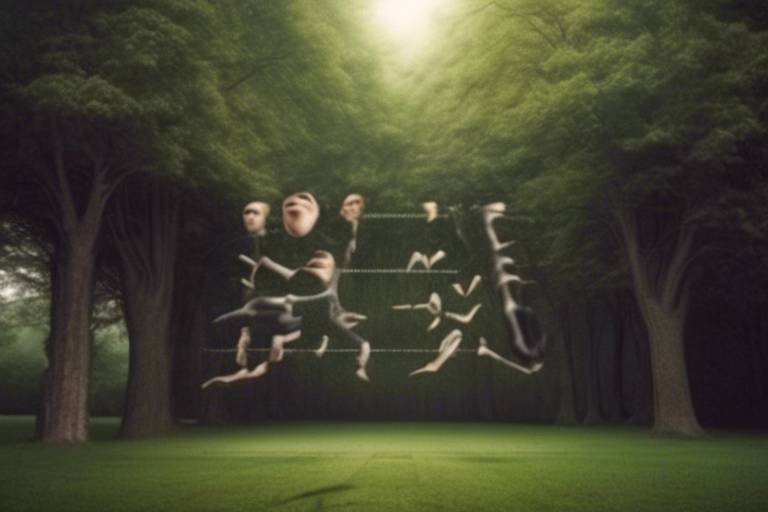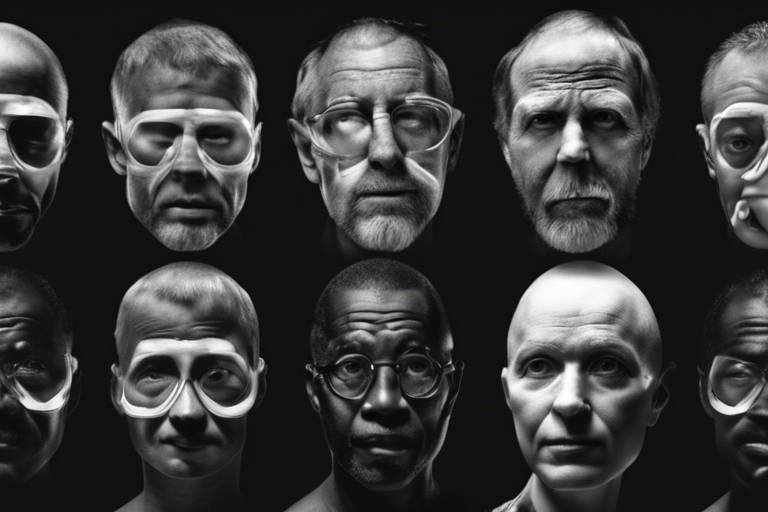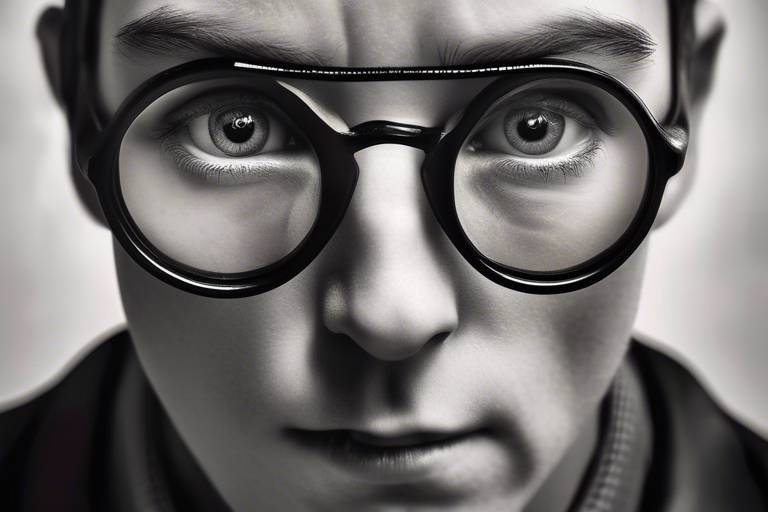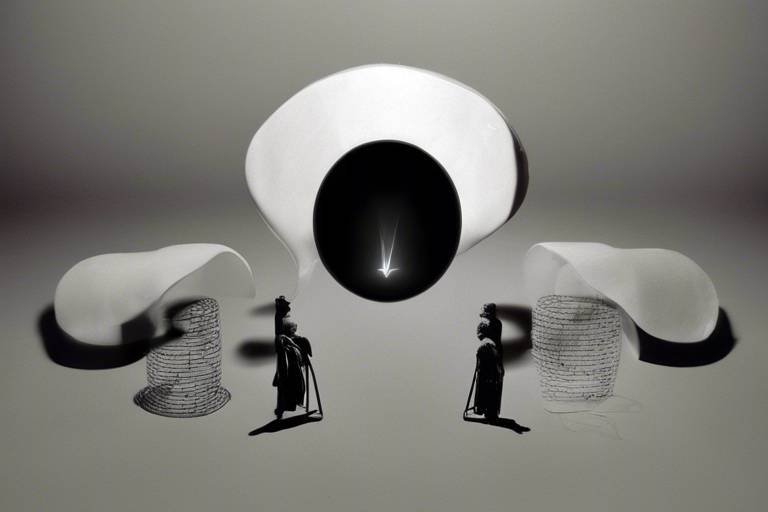Can We Prove Physical Reality Exists?
Have you ever found yourself gazing at the stars, pondering whether the universe around you is as tangible as it seems? The question of whether we can prove the existence of physical reality is not just a philosophical musing; it’s a fundamental inquiry that crosses the boundaries of science, perception, and existence. In a world where our senses can sometimes deceive us, how can we be sure that what we see, touch, and experience is indeed real? This article embarks on a journey through various philosophical and scientific perspectives, exploring arguments, evidence, and the profound implications that arise from our understanding of the tangible world.
Understanding what constitutes reality is fundamental to our existence. Reality can be viewed through numerous lenses—philosophical, scientific, and experiential. Philosophers have long grappled with the definitions and interpretations that shape our perception of the physical world. Are we simply the sum of our sensory experiences, or is there an objective reality that exists independently of our perceptions? This section delves into the intricacies of reality, examining how different interpretations can lead to vastly different understandings of what is real.
Philosophers have long debated the nature of reality, leading to a rich tapestry of thought that challenges our understanding of existence. Two of the most prominent schools of thought are idealism and realism. Idealism posits that reality is mentally constructed, while realism asserts that an objective reality exists independent of our perceptions. As we navigate through these contrasting perspectives, we begin to unearth the complexities that lie at the heart of our understanding of reality.
This age-old debate raises crucial questions about the nature of existence. Idealism suggests that our perceptions shape reality, meaning that without a conscious observer, objects may not exist. In contrast, realism posits that an objective reality exists regardless of our perceptions. This dichotomy invites us to consider: if reality is subjective, how can we ever claim to know anything for sure?
George Berkeley, an influential philosopher, argued that reality is dependent on perception. He famously stated, "Esse est percipi" or "To be is to be perceived." This idea challenges the notion of an independent physical reality, suggesting that objects only exist when they are perceived. Imagine walking through a forest—if no one is there to witness the towering trees, do they still stand? Berkeley's idealism pushes us to question the very fabric of existence.
On the other hand, John Locke's perspective emphasizes that reality exists outside of human perception. He proposed that our senses provide us with knowledge of a world that is fundamentally real and objective. According to Locke, even when we close our eyes, the world continues to exist—an unwavering truth that stands irrespective of our awareness. This perspective reassures us that there is a physical world out there, waiting to be discovered.
Phenomenology offers a unique lens through which we can explore how individuals experience reality. This philosophical approach emphasizes the importance of lived experiences and how they shape our understanding of existence. Each person's perception of reality is colored by their unique experiences, emotions, and thoughts. Thus, while we may strive for a universal understanding of reality, it remains deeply personal and subjective.
While philosophy provides a rich framework for understanding reality, scientific inquiry offers a different approach. Through empirical evidence and rigorous experimentation, science seeks to prove the existence of a tangible, observable universe. This section explores how scientific theories and discoveries contribute to our understanding of physical reality.
Quantum mechanics introduces a fascinating twist to traditional notions of reality. Concepts like superposition and entanglement challenge our understanding of existence at the smallest scales. For instance, particles can exist in multiple states simultaneously until observed, leading us to question whether reality is a fixed state or a fluid construct influenced by observation. What does this mean for our understanding of the physical world? It suggests that perhaps reality is not as straightforward as we once believed.
Einstein's theory of relativity revolutionized our understanding of space and time, providing a framework for understanding the physical universe's structure. According to relativity, time and space are intertwined, creating a dynamic reality that bends and shifts. This understanding has profound implications, suggesting that our perception of reality is not only subjective but also influenced by the very fabric of the universe itself.
Perception plays a crucial role in how we interpret reality. Our senses are the gateways through which we experience the world, yet they can also mislead us. This section explores the relationship between sensory experiences and our understanding of a physical world that may not always align with our perceptions.
Individual perceptions can shape one's understanding of reality, emphasizing the subjective nature of human experience. For example, two people may witness the same event but interpret it in vastly different ways based on their backgrounds, beliefs, and emotions. This subjectivity raises important questions: If reality is experienced differently by each individual, how can we claim to know what is truly real?
Exploring optical illusions and cognitive biases highlights the complexities of perception. Our brains are wired to interpret sensory information in specific ways, which can lead to misunderstandings of what is real. For instance, consider the classic optical illusion of a spinning dancer—depending on how you look at it, the dancer appears to spin in one direction or the other. Such phenomena challenge our understanding of reality, reminding us that what we perceive may not always align with the objective world.
Proving the existence of physical reality carries profound implications for philosophy, science, and everyday life. Understanding reality influences our ethical frameworks, scientific advancements, and even our personal relationships. This section discusses the consequences of establishing a firm understanding of reality.
Our perceptions of reality can significantly affect moral decision-making and societal norms. If reality is subjective, then ethical truths may also vary from person to person. This raises critical questions about accountability and justice. How can we establish a moral framework if everyone perceives reality differently?
The validation of physical reality informs scientific advancements and technological progress. A clear understanding of reality drives innovation and exploration, pushing the boundaries of what we know. As we delve deeper into the mysteries of the universe, our grasp of reality continues to evolve, leading to groundbreaking discoveries that redefine our understanding of existence.
- What is the difference between idealism and realism? Idealism posits that reality is mentally constructed, while realism asserts that an objective reality exists independent of our perceptions.
- How does quantum mechanics challenge our understanding of reality? Quantum mechanics introduces concepts like superposition and entanglement, suggesting that reality may not be fixed but influenced by observation.
- Why is perception important in understanding reality? Our senses are the primary means through which we experience the world, but they can be misleading, leading to subjective interpretations of reality.
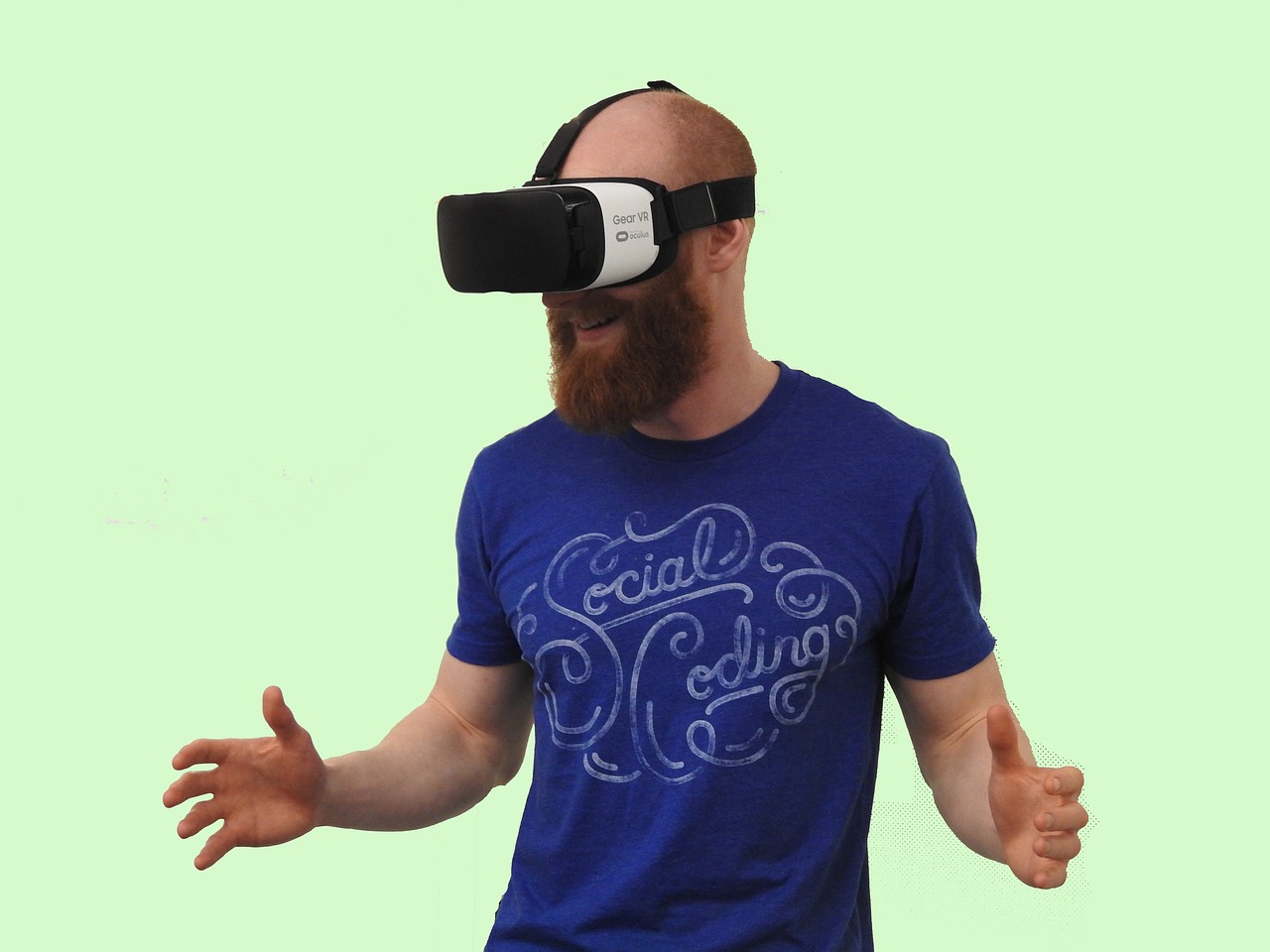
The Nature of Reality
Understanding what constitutes reality is fundamental to our existence. It's a question that has puzzled humanity for centuries, leading us down a rabbit hole of philosophical inquiry and scientific exploration. But what does it really mean to say something is "real"? Is it merely what we can touch and see, or is there more to it? This section delves into various philosophical definitions and interpretations that shape our perception of the physical world and its existence.
At its core, reality can be seen as the sum of all things that exist, independent of our thoughts or feelings. However, this definition becomes murky when we consider how our perceptions influence our understanding of the world around us. For instance, two people can witness the same event but interpret it entirely differently based on their backgrounds, beliefs, and experiences. This raises an intriguing question: Is reality truly objective, or is it a subjective construct shaped by our minds?
To navigate through this complex landscape, we can explore several key concepts that define the nature of reality:
- Objective Reality: This refers to the idea that there exists a world independent of our perceptions, one that can be observed and measured.
- Subjective Reality: This concept suggests that reality is heavily influenced by individual experiences and perceptions, making it unique to each person.
- Inter-subjective Reality: This is the shared understanding of reality among a group of people, which can lead to common beliefs and societal norms.
Philosophers have long debated these concepts, with some arguing that the very act of perception shapes reality itself. Imagine a painter creating a masterpiece; each stroke of the brush not only adds color but also infuses the canvas with the artist's emotions and thoughts. In a similar vein, our perceptions add layers to our understanding of reality, making it a deeply personal experience.
Furthermore, the advent of modern science has introduced a new dimension to our understanding of reality. Scientific inquiry seeks to uncover the underlying principles that govern the universe, providing a framework for understanding the physical world. Yet, even in science, the line between objective reality and subjective interpretation can blur. Take, for example, the phenomenon of quantum mechanics, which challenges our traditional notions of reality by introducing concepts that defy common sense, such as particles existing in multiple states at once.
In conclusion, the nature of reality is a rich tapestry woven from threads of philosophy, perception, and scientific inquiry. It invites us to ponder profound questions about existence, urging us to look beyond the surface and explore the deeper implications of what it means to be "real." As we continue to unravel these mysteries, we may find that reality is not just a static backdrop for our lives but a dynamic interplay of experience, thought, and discovery.

Philosophical Perspectives
When it comes to understanding the essence of reality, philosophers have been at the forefront, grappling with questions that have lingered for centuries. Their debates often revolve around two primary schools of thought: idealism and realism. These perspectives offer distinct interpretations of reality, challenging us to consider whether the world exists independently of our perceptions or if it is merely a construct of our minds.
Idealism posits that reality is fundamentally shaped by our perceptions and thoughts. This viewpoint suggests that objects do not possess an existence outside of our awareness. Imagine a painting that only comes to life when viewed; in the idealist perspective, the essence of that painting is tied to the observer's experience. Philosophers like George Berkeley championed this idea, famously arguing that "to be is to be perceived." In his view, the existence of objects is contingent upon someone observing them. This raises intriguing questions: If no one is around to perceive an object, does it truly exist? Berkeley's idealism challenges the notion of an independent physical reality, pushing us to rethink our understanding of existence itself.
On the flip side, we have realism, which asserts that an objective reality exists, regardless of human perception. Think of it as a sturdy tree standing tall in a forest, whether or not anyone is there to appreciate its beauty. Philosophers like John Locke argued that our senses are reliable instruments that provide us with knowledge of a world that is fundamentally real and objective. Locke believed that while our perceptions may be subjective, they are grounded in an external reality that can be understood through empirical observation. His perspective invites us to consider the world as a vast, interconnected web of existence that remains constant, even when we are not looking.
To further illustrate these contrasting views, consider the following table:
| Aspect | Idealism | Realism |
|---|---|---|
| Definition | Reality is mentally constructed | Reality exists independently of perception |
| Key Proponent | George Berkeley | John Locke |
| View on Existence | Objects exist only when perceived | Objects exist regardless of perception |
Beyond idealism and realism, other philosophical movements like phenomenology also contribute to our understanding of reality. This approach emphasizes lived experiences and how they shape our perception of the world. Think of it as the lens through which we view our existence—each person's experiences color their understanding of reality, creating a rich tapestry of interpretations. Phenomenology invites us to explore how our unique experiences influence our conception of the physical world, reminding us that reality is not just a static entity but a dynamic interplay of perception and existence.
In summary, the philosophical perspectives on reality present a fascinating dialogue between idealism and realism. As we navigate through these ideas, we are left pondering profound questions about the nature of existence, the reliability of our perceptions, and the very essence of reality itself. These discussions not only enrich our understanding of philosophy but also invite us to reflect on our own experiences and how they shape our view of the world around us.
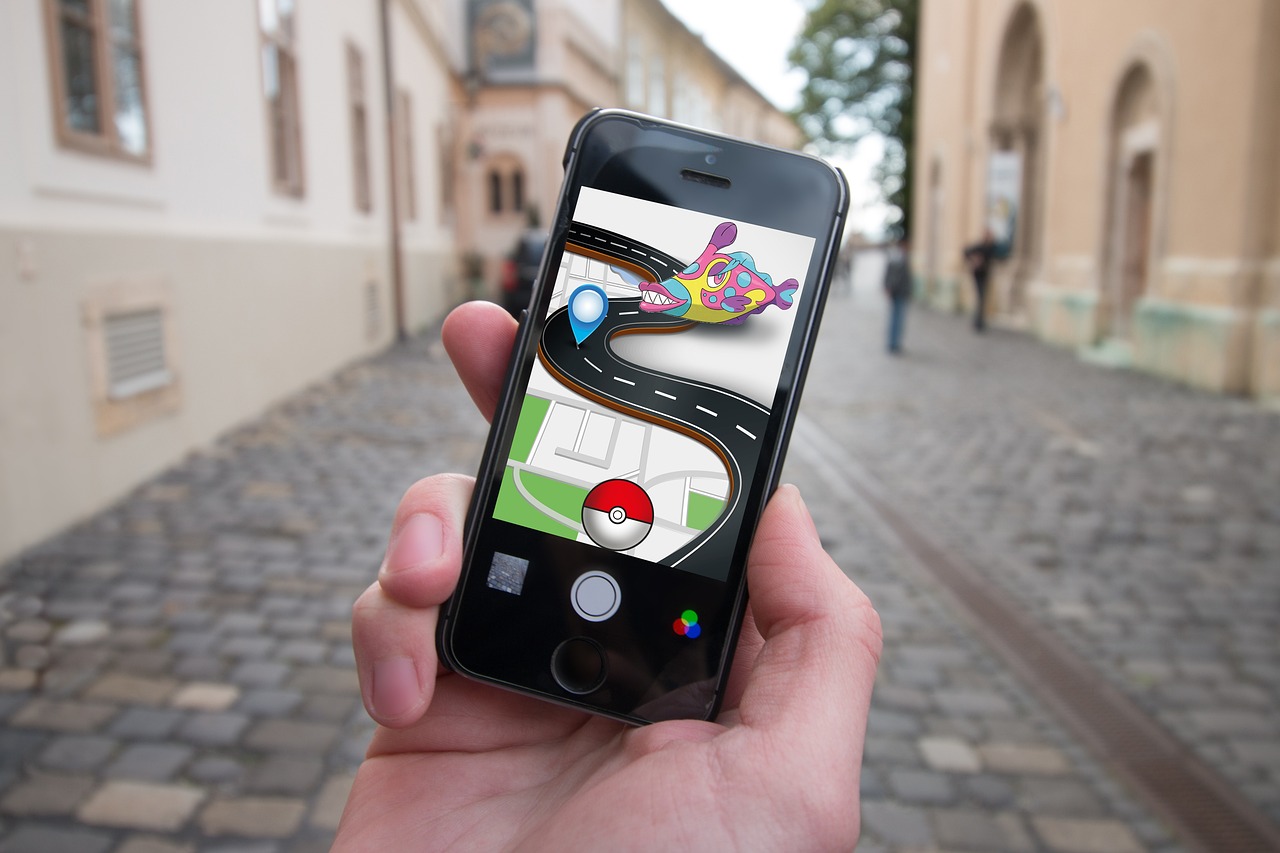
Idealism vs. Realism
When we dive into the philosophical debate of idealism versus realism, we find ourselves standing at a crossroads of perception and existence. Imagine for a moment that reality is like a grand stage play. In the realm of idealism, the belief is that the play only exists when someone is watching it. This perspective suggests that our minds construct reality, and without our perception, the physical world ceases to exist. George Berkeley, a prominent idealist, famously articulated this view with his assertion that "to be is to be perceived." In simpler terms, if a tree falls in the forest and no one is around to hear it, does it make a sound? According to idealists, the answer leans toward a resounding no.
On the flip side, we have realism, a stance that firmly believes in an objective reality that exists independently of our perceptions. Think of realism as the solid ground beneath our feet, unyielding and constant, regardless of whether we acknowledge it or not. John Locke, a key figure in this camp, argued that our senses act as windows to a world that is fundamentally real and objective. He maintained that even if we were to close our eyes, the world would continue to exist, much like a book that remains on the shelf, waiting to be read, even when no one is around.
The clash between these two perspectives raises intriguing questions about our understanding of existence. If we lean towards idealism, we might find ourselves questioning the very essence of reality—does it truly exist outside our minds? Conversely, if we embrace realism, we must grapple with the implications of our perceptions potentially distorting the objective truth around us.
To illustrate the differences between idealism and realism, consider the following table:
| Aspect | Idealism | Realism |
|---|---|---|
| Definition | Reality is mentally constructed and dependent on perception. | Reality exists independently of perception. |
| Key Proponent | George Berkeley | John Locke |
| Core Belief | To be is to be perceived. | Reality is objective and can be known through the senses. |
| Example | A tree falling in a forest makes no sound if no one hears it. | A tree exists and makes a sound whether or not anyone is present. |
This philosophical tug-of-war continues to influence various fields, from science to ethics, shaping our understanding of the world around us. In essence, the debate between idealism and realism is not merely academic; it has real-world implications that affect how we perceive our lives, our interactions, and the very nature of reality itself.
- What is idealism?
Idealism is the philosophical belief that reality is mentally constructed and dependent on our perceptions. - What is realism?
Realism asserts that an objective reality exists independently of our perceptions. - Who were the key philosophers in this debate?
George Berkeley is a notable proponent of idealism, while John Locke is a key figure in realism. - How does this debate impact our understanding of reality?
The idealism vs. realism debate influences various fields, including science, ethics, and everyday decision-making.

Berkeley's Idealism
George Berkeley, an influential philosopher of the 18th century, introduced a thought-provoking perspective known as idealism. His central thesis is that physical objects do not exist independently of our perception; rather, they exist only when they are perceived. In simpler terms, if a tree falls in a forest and no one is around to hear it, does it make a sound? Berkeley would argue that it does not, as sound, like all other sensory experiences, is dependent on a perceiver. This radical idea challenges our conventional understanding of reality, suggesting that the physical world is a construct of our minds.
Berkeley famously coined the phrase "esse est percipi," which translates to "to be is to be perceived." This statement encapsulates his philosophy, implying that the existence of an object is contingent upon it being observed. Imagine walking through a beautiful garden; the vibrant colors and fragrant flowers exist in that moment because you are there to experience them. Remove the observer, and according to Berkeley, the garden loses its existence. This perspective raises intriguing questions about the nature of reality and whether anything exists outside our conscious experience.
To further illustrate Berkeley's idealism, we can consider the following key points:
- Perception as Reality: For Berkeley, our perceptions are the only reality we can truly know. Everything we experience is filtered through our senses, making it impossible to claim knowledge of an external world independent of those senses.
- The Role of God: Berkeley argued that God plays a crucial role in maintaining the existence of objects when they are not being perceived by humans. In his view, God's perpetual perception ensures that physical objects continue to exist even when no one is observing them.
- Challenge to Materialism: Berkeley's idealism directly opposes materialism, which posits that physical matter is the fundamental substance of reality. By asserting that perception is paramount, Berkeley invites us to reconsider the very foundations of how we understand existence.
Berkeley's idealism invites us to reflect on our daily experiences and the nature of reality itself. It challenges us to think critically about how we perceive the world around us and whether our understanding of existence is shaped by our own consciousness. In a way, Berkeley's philosophy is like a mirror reflecting our thoughts back at us, urging us to question the very fabric of reality. Are we merely observers of a world that exists independently, or are we co-creators of our reality, shaping it through our perceptions?
In conclusion, Berkeley's idealism is a fascinating lens through which to view the world. It compels us to ask profound questions about existence, perception, and the role of the observer in defining reality. As we navigate our lives, his ideas encourage us to remain curious and open-minded about the nature of the universe and our place within it.
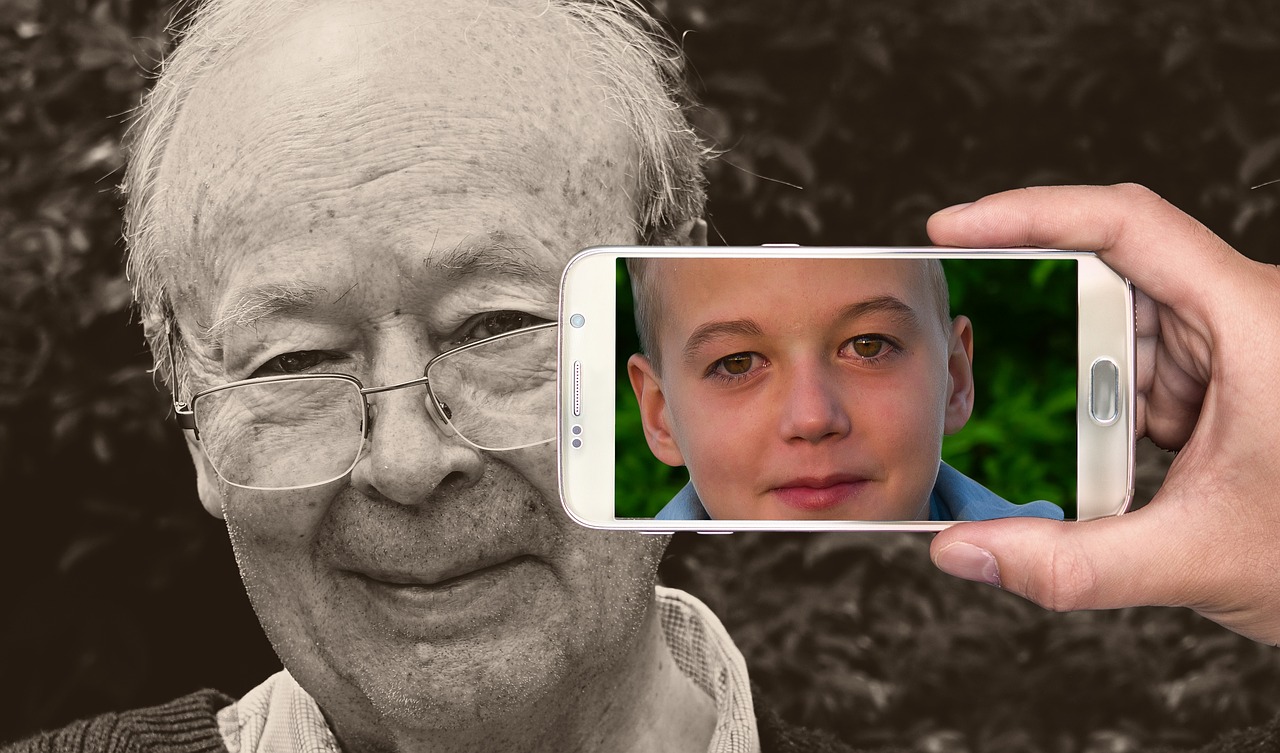
Locke's Realism
John Locke, a prominent figure in the realm of philosophy, significantly contributed to our understanding of reality through his theory of realism. Locke's perspective is rooted in the belief that an objective reality exists independent of our perceptions. He argued that the world we experience through our senses is not merely a figment of our imagination, but rather a tangible entity that exists outside of our minds. In essence, Locke posited that our sensory experiences are windows through which we gain knowledge of this objective reality.
Locke distinguished between two types of qualities: primary and secondary. Primary qualities, such as shape, size, and motion, are inherent to objects and exist regardless of whether they are perceived. In contrast, secondary qualities, like color and taste, are dependent on our sensory perception. For instance, the sweetness of an apple is a secondary quality that arises from our interaction with it, while its round shape remains a primary quality that exists independently of our perception. This distinction is crucial because it highlights how our understanding of reality is a blend of both objective features and subjective experiences.
Locke's ideas challenge us to consider the implications of our perceptions. If our senses are reliable, then we can trust that the physical world exists as we experience it. However, if our senses can deceive us, as seen in optical illusions or dreams, it raises questions about the nature of reality itself. Locke believed that through careful observation and rational thought, we can arrive at a more accurate understanding of the world around us. His emphasis on empirical evidence laid the groundwork for the scientific method, encouraging a systematic approach to exploring and validating the existence of physical reality.
In today's context, Locke's realism is still relevant as we grapple with advancements in technology and science that challenge our perceptions. For example, virtual reality and augmented reality create immersive experiences that can blur the lines between what is real and what is simulated. These innovations compel us to revisit Locke's ideas and consider how they apply to our modern understanding of reality. Are we still capable of discerning the objective world from the subjective experiences that technology creates?
Ultimately, Locke's realism invites us to engage in a deeper exploration of our existence. It encourages us to question the reliability of our senses while simultaneously affirming that there is a world out there waiting to be understood. This philosophical framework not only shapes our perception of reality but also influences our interactions with the world, guiding us toward a more informed and thoughtful existence.

Phenomenology and Existence
Phenomenology is a fascinating philosophical approach that digs deep into our lived experiences and how they shape our understanding of reality. Imagine waking up in the morning, feeling the warmth of the sun on your face, or the cool breeze brushing against your skin. These sensory experiences are not just fleeting moments; they are the building blocks of how we perceive the world around us. Phenomenology invites us to explore these experiences, emphasizing that our understanding of existence is deeply intertwined with our perceptions.
At its core, phenomenology suggests that reality is not merely an objective entity waiting to be discovered, but rather a subjective experience that unfolds uniquely for each individual. This perspective leads us to ask: How do our personal experiences influence our understanding of what is real? For instance, two people may witness the same event but interpret it entirely differently based on their backgrounds, emotions, and previous experiences. This subjectivity highlights the complexity of existence and challenges the notion of a singular, objective reality.
One of the key figures in phenomenology, Edmund Husserl, argued that we must return to the "things themselves" to understand reality. This means focusing on how things appear to us through our perceptions rather than relying on preconceived notions or scientific abstractions. By doing so, phenomenology encourages us to examine our consciousness and the meanings we ascribe to our experiences.
Furthermore, phenomenology acknowledges that our experiences are often layered with emotions and interpretations. For example, consider the experience of tasting your favorite dish. It’s not just about the flavors; it’s also about the memories associated with that meal, the people you shared it with, and the feelings it evokes. This rich tapestry of experiences contributes to our understanding of existence, making it deeply personal and subjective.
In examining the relationship between phenomenology and existence, we can also consider the implications of this perspective. By recognizing that our perceptions shape our reality, we become more aware of how we interact with the world and others. This awareness can foster empathy, as we begin to understand that everyone has their own unique lens through which they view reality. In a world that often feels divided, this understanding can be a powerful tool for connection and compassion.
In conclusion, phenomenology invites us to explore the intricate relationship between our perceptions and the existence of reality. By embracing this approach, we can deepen our understanding of ourselves and the world around us. It challenges us to consider that reality is not just a physical construct but a rich tapestry woven from our lived experiences, emotions, and interpretations. As we navigate our lives, let us remain open to the diverse ways in which reality can be experienced and understood.
- What is phenomenology? Phenomenology is a philosophical approach that focuses on the study of conscious experience and how it shapes our understanding of reality.
- How does phenomenology differ from realism? While realism asserts that an objective reality exists independent of perception, phenomenology emphasizes the subjective nature of experience and how it influences our understanding of existence.
- Why is understanding perception important? Understanding perception is crucial because it shapes our interactions with the world and influences our beliefs, emotions, and ethical decisions.

Scientific Evidence
When we dive into the realm of , we find ourselves navigating through a landscape filled with empirical data, rigorous testing, and groundbreaking theories that shape our understanding of the universe. Science offers a unique lens through which we can explore the existence of physical reality, relying on observations and experiments rather than mere speculation. The scientific method, a systematic approach to inquiry, allows us to build a body of knowledge that supports the idea of a tangible, observable universe. But what exactly does this entail?
One of the most captivating aspects of modern physics is quantum mechanics, a field that pushes the boundaries of our understanding of reality. At its core, quantum mechanics introduces concepts that seem almost fantastical, such as superposition—the idea that particles can exist in multiple states simultaneously—and entanglement, where particles become interconnected in ways that defy classical physics. These phenomena challenge our traditional notions of existence, prompting us to reconsider what we know about the physical world. For example, if particles can be in multiple states at once, does that mean reality is not as fixed as we once believed? This leads us to ponder the implications of such findings on our understanding of existence itself.
Furthermore, Einstein's theory of relativity revolutionized the way we perceive space and time. Before relativity, time was thought to be a constant, a universal clock ticking away the same for everyone. However, Einstein shattered this notion, revealing that time can stretch and contract based on speed and gravity. This profound realization not only changed the way we understand the universe but also provided a framework for comprehending the physical universe's structure. In essence, relativity suggests that our experience of reality is not only subjective but also influenced by the very fabric of the cosmos.
To illustrate the relationship between scientific evidence and physical reality, consider the following table that summarizes key concepts from quantum mechanics and relativity:
| Concept | Description |
|---|---|
| Superposition | The ability of a quantum system to be in multiple states at once until observed. |
| Entanglement | A phenomenon where particles become interconnected, affecting each other's state instantaneously over distance. |
| Time Dilation | The difference in elapsed time as measured by two observers, due to relative velocity or gravitational fields. |
As we consider these scientific advancements, it becomes clear that empirical evidence plays a crucial role in our understanding of physical reality. Through experiments and observations, scientists have been able to validate theories that not only explain the workings of the universe but also challenge our perceptions of what is real. This ongoing exploration fuels our quest for knowledge, pushing the boundaries of what we know and inviting us to question the very nature of existence.
In summary, the scientific evidence supporting the existence of physical reality is multifaceted and complex. From the mind-bending principles of quantum mechanics to the transformative insights of relativity, science continually reshapes our understanding of the universe. This journey into the depths of reality not only enriches our intellectual landscape but also invites us to ponder profound questions about our place in the cosmos. Are we merely observers in a vast, intricate tapestry of existence, or do we play an active role in shaping the reality we perceive? As we continue to explore these questions, the interplay between science and our understanding of reality remains a captivating and essential pursuit.

Quantum Mechanics
Quantum mechanics is nothing short of a mind-bending journey into the very fabric of reality. At its core, it challenges our traditional views about the nature of existence, presenting a universe that behaves in ways that are often counterintuitive. Imagine a world where particles can exist in multiple states at once, or where two particles can be entangled in such a way that the state of one instantly influences the state of another, regardless of the distance separating them. This phenomenon, known as quantum entanglement, raises profound questions about the interconnectedness of all things in the universe.
One of the key principles of quantum mechanics is superposition, which posits that particles can exist in multiple states simultaneously until they are observed. This idea is famously illustrated by the thought experiment known as Schrödinger's cat, where a cat in a box is both alive and dead until someone opens the box to check. This challenges our classical understanding of reality, suggesting that observation plays a crucial role in determining the state of a system. It's as if reality is waiting for us to take a peek before it decides what it actually is!
Furthermore, quantum mechanics introduces the concept of wave-particle duality, which states that particles, like electrons and photons, can exhibit both wave-like and particle-like properties depending on how they are measured. This duality is a cornerstone of quantum theory and leads to the conclusion that our perception of reality may be limited by the tools and methods we use to observe it. The implications of this are staggering: could it be that the universe is far more complex and intricate than we can even begin to comprehend?
To illustrate some of these concepts, consider the following table summarizing key principles of quantum mechanics:
| Principle | Description |
|---|---|
| Superposition | Particles can exist in multiple states at once until observed. |
| Entanglement | Particles can be connected in such a way that the state of one affects the state of another, no matter the distance. |
| Wave-Particle Duality | Particles exhibit both wave-like and particle-like properties depending on measurement. |
As we dive deeper into quantum mechanics, we encounter the Uncertainty Principle, formulated by Werner Heisenberg, which states that certain pairs of physical properties, like position and momentum, cannot be simultaneously measured with arbitrary precision. This principle introduces a fundamental limit to what we can know about the physical state of a system, further complicating our understanding of reality. It’s a bit like trying to take a snapshot of a moving car; the faster it goes, the blurrier the image becomes.
Ultimately, quantum mechanics invites us to reconsider our definitions of reality. It suggests that the universe is not merely a collection of tangible objects but a complex web of interactions and probabilities. This leads us to ponder: if our understanding of reality is so deeply intertwined with our perceptions and measurements, what does that say about the nature of existence itself? Are we merely observers in a grand cosmic play, or do we play an active role in shaping the very reality we experience? The answers may elude us, but the questions propel us into a deeper exploration of both science and philosophy.

Relativity and Space-Time
Einstein's theory of relativity has fundamentally transformed our understanding of the universe, introducing concepts that challenge our intuitive perceptions of time and space. Before Einstein, we viewed time as a constant, a universal clock ticking away the same for everyone, everywhere. However, relativity shattered that notion, revealing that time is not a fixed entity but rather a flexible dimension that can stretch and warp based on speed and gravitational forces. Imagine time as a rubber band—when you pull it, it stretches; when you let it go, it contracts. This is akin to how time behaves under the influence of gravity and velocity.
At the heart of relativity lies the idea that space and time are intertwined in a four-dimensional continuum known as space-time. This means that the fabric of the universe is not merely a backdrop against which events unfold but an active participant in the dynamics of the cosmos. For instance, massive objects like planets and stars warp the space-time around them, causing a phenomenon we perceive as gravity. This relationship can be visualized using a simple table that outlines the key aspects of relativity:
| Concept | Explanation |
|---|---|
| Time Dilation | Time moves slower for objects in motion compared to stationary observers. |
| Gravitational Time Dilation | Time moves slower in stronger gravitational fields. |
| Curvature of Space-Time | Massive objects cause a curvature in the fabric of space-time, affecting the motion of other objects. |
This understanding of space-time has profound implications. For example, astronauts aboard the International Space Station experience time slightly differently than those on Earth due to their high speeds and the weaker gravitational field they occupy. This phenomenon, known as time dilation, means that when they return, they are technically a fraction of a second younger than their counterparts on Earth. It’s a mind-boggling concept that illustrates how our reality is not as straightforward as it appears.
Moreover, the implications of relativity extend beyond theoretical physics into practical applications. Technologies such as GPS rely on adjustments for both the speed of satellites and the gravitational effects of Earth to provide accurate location data. Without accounting for these relativistic effects, GPS systems would quickly become inaccurate, leading to errors in navigation that could have serious real-world consequences.
In summary, Einstein's theory of relativity and the concept of space-time revolutionized our understanding of the universe. They challenge us to rethink our perceptions of reality, illustrating that what we consider to be absolute truths—like time and space—are actually much more fluid and interconnected than we might have ever imagined. As we continue to explore the depths of these theories, we unlock new avenues of understanding that could one day lead to even greater discoveries about the nature of existence itself.
- What is the theory of relativity? - It is a scientific theory proposed by Albert Einstein that describes the laws of physics in relation to observers in different frames of reference, emphasizing the relationship between space and time.
- How does relativity affect time travel? - Relativity suggests that time can be experienced differently depending on speed and gravity, which opens up theoretical discussions about time travel, although practical time travel remains speculative.
- Can we see the effects of relativity in everyday life? - Yes, technologies like GPS rely on corrections for relativistic effects, demonstrating that relativity has practical implications in our daily lives.

The Role of Perception
When we dive into the concept of reality, we quickly find that our perception plays a pivotal role in shaping how we interpret the world around us. Have you ever wondered why two people can witness the same event yet walk away with entirely different interpretations? This is the crux of perception's influence on our understanding of reality. Our senses—sight, sound, touch, taste, and smell—are the gateways through which we experience life, but they are also prone to biases and limitations. Think of perception as a filter through which the raw data of reality is processed; what comes out on the other side is a subjective representation, often colored by our past experiences, emotions, and even cultural backgrounds.
Moreover, perception is not just about the physical senses; it encompasses our mental frameworks and cognitive processes. For instance, consider how optical illusions can trick our brains into seeing something that isn't there or interpreting something in a way that defies logic. These illusions serve as a reminder that what we perceive is not always a direct reflection of reality. They highlight the fascinating yet complex relationship between our minds and the physical world, suggesting that reality is not merely what exists but also how we interpret and understand that existence.
In this context, we can categorize perception into a few key elements:
- Subjectivity: Each individual's perception is unique, influenced by personal experiences and emotional states. This subjectivity can lead to vastly different interpretations of the same event.
- Cognitive Bias: Our brains often rely on shortcuts to make sense of the world, which can lead to biases that skew our understanding of reality. For example, confirmation bias can cause us to favor information that aligns with our pre-existing beliefs.
- Contextual Influence: The environment and context in which we experience something can dramatically affect our perception. A seemingly neutral event could be interpreted as positive or negative depending on the surrounding circumstances.
Understanding these elements is crucial because it underscores the idea that our grasp of reality is not absolute. Instead, it's a tapestry woven from the threads of our perceptions, experiences, and interpretations. This realization can be both liberating and daunting. On one hand, it allows for a rich diversity of viewpoints; on the other, it challenges the notion of a universally accepted reality. So, how do we reconcile these differences? By engaging in open dialogue and considering multiple perspectives, we can expand our understanding and appreciate the complexity of human experience.
As we delve deeper into the implications of perception, it becomes clear that it not only shapes our understanding of the physical world but also influences our interactions with others. The way we perceive someone else's actions can lead to misunderstandings or empathy, depending on our interpretation. This dynamic plays a significant role in our social relationships and can impact everything from personal connections to broader societal norms.
In conclusion, the role of perception in defining reality is profound and multifaceted. It reminds us that while we may strive for an objective understanding of the world, our interpretations are inevitably colored by our unique experiences. Embracing this complexity can lead to richer interactions and a deeper appreciation for the diverse ways in which we all experience life.
- What is the difference between perception and reality? Perception refers to how we interpret and understand the world through our senses, while reality is the objective existence of the world independent of our interpretations.
- Can two people perceive the same event differently? Absolutely! Individual experiences, emotions, and cognitive biases can lead to vastly different interpretations of the same event.
- How do cognitive biases affect our perception? Cognitive biases can distort our understanding by leading us to favor information that confirms our pre-existing beliefs, thus skewing our interpretation of reality.
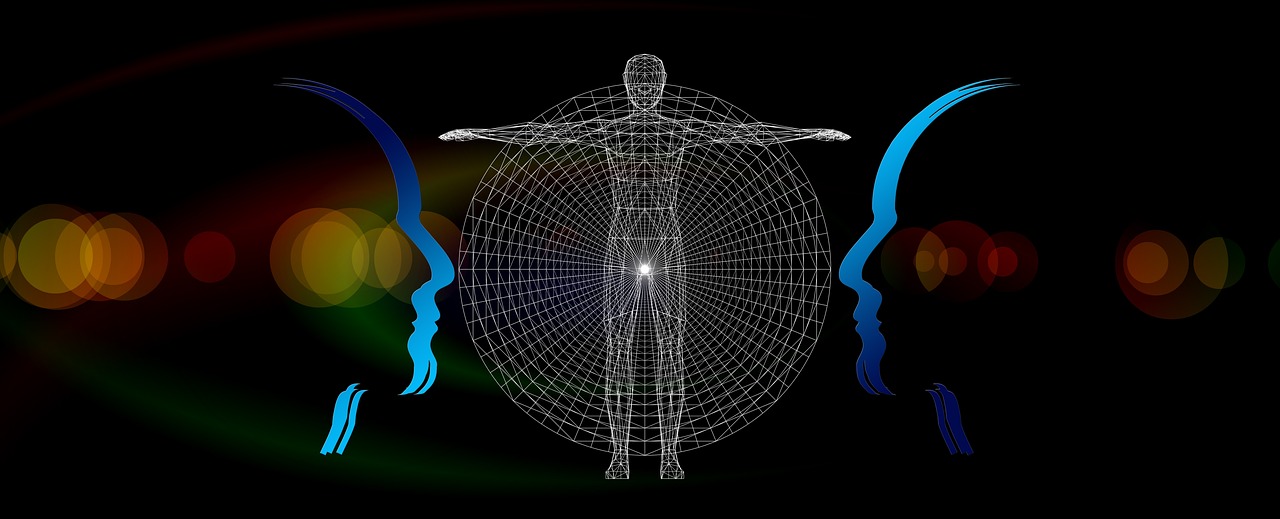
Subjectivity in Experience
When we talk about , we're diving into the fascinating realm of how personal perspectives shape our understanding of reality. Imagine two people standing side by side, gazing at a vibrant sunset. While one person might be captivated by the rich hues of orange and pink, reminiscing about a cherished memory, the other might feel a wave of sadness, reflecting on a recent loss. This illustrates how our unique backgrounds, emotions, and thoughts can color our interpretation of the same physical event. This subjectivity raises an essential question: if our experiences of reality are so varied, can we ever truly know what is "real"?
Our senses are the primary tools we use to interact with the world. They provide us with information about our surroundings, yet they are inherently limited and prone to distortion. For instance, consider how a simple optical illusion can trick our brains into seeing something that isn't there or misinterpreting what is. This phenomenon highlights the complexity of perception and suggests that our understanding of reality is not just a straightforward reflection of the world around us but a complex interplay of sensory input and cognitive processes.
To further illustrate this point, let’s examine some factors that contribute to the subjectivity of experience:
- Cultural Background: Different cultures have unique interpretations of events, symbols, and even emotions, which can lead to varied perceptions of reality.
- Personal Experiences: Our past experiences shape how we interpret current situations, often leading to biases that color our understanding.
- Emotional State: Our feelings at any given moment can significantly influence how we perceive and react to our environment.
In essence, the subjectivity of experience challenges the notion of a universally shared reality. It suggests that while we may inhabit the same physical world, our interpretations of it can be as different as night and day. This subjectivity not only complicates philosophical discussions about reality but also has practical implications in fields like psychology, art, and even science. Acknowledging that our perceptions are colored by individual experiences allows us to approach discussions about reality with a more open mind, embracing the diversity of human experience.
Ultimately, understanding the subjectivity in our experiences can lead to deeper empathy and connection with others. By recognizing that everyone has their unique lens through which they view the world, we can foster a more inclusive dialogue about what reality truly means.
- What is subjectivity in experience? Subjectivity in experience refers to how personal perspectives, emotions, and backgrounds influence individual interpretations of reality.
- How does perception affect our understanding of reality? Perception shapes our understanding of reality by filtering sensory information through our unique experiences and emotions, leading to diverse interpretations.
- Can two people perceive the same event differently? Yes, two people can perceive the same event differently due to their individual backgrounds, emotional states, and personal experiences.
- Why is it important to understand subjectivity in experience? Understanding subjectivity is crucial as it fosters empathy, promotes inclusive discussions, and helps us appreciate the diversity of human experiences.
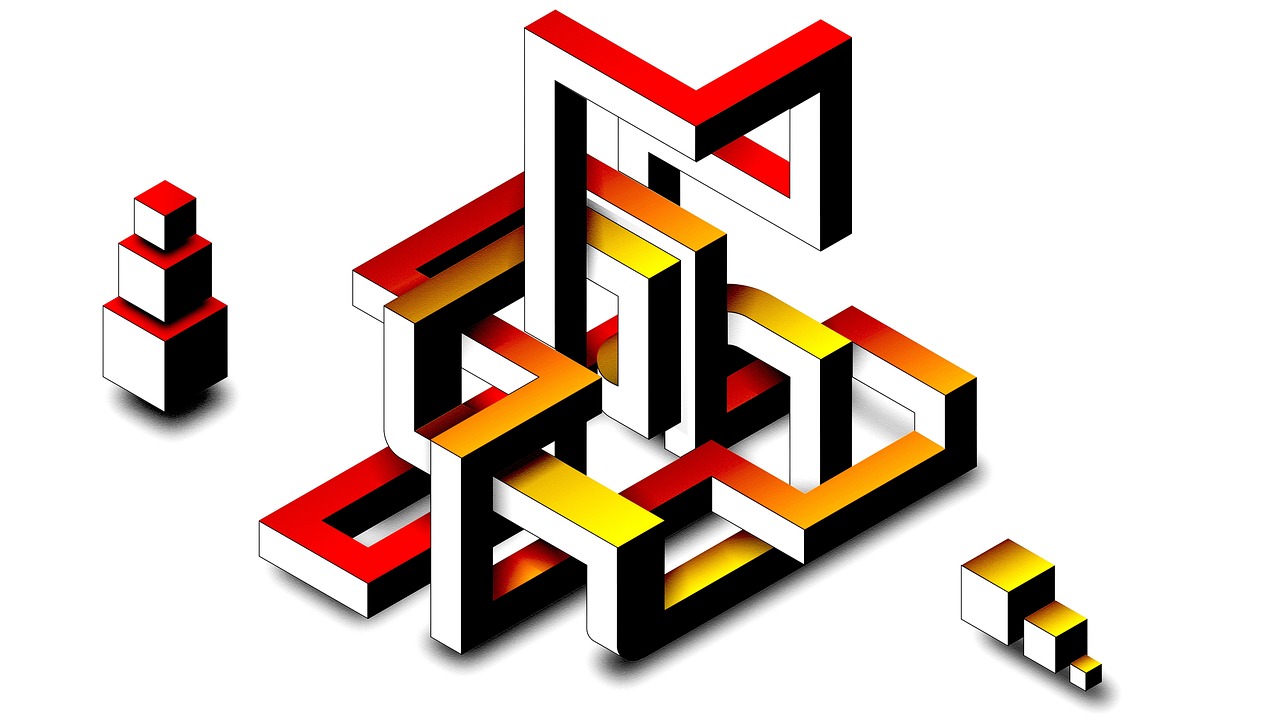
Illusions and Reality
Have you ever looked at a picture that seemed to move or change before your eyes? Or perhaps you've found yourself questioning whether what you see is truly there or just a trick of the light? Illusions play a fascinating role in our understanding of reality, revealing how our brains interpret sensory information and how easily they can be deceived. These phenomena challenge our perceptions and make us ponder: if our senses can mislead us, how can we trust our understanding of what is real?
Illusions can be categorized into various types, each illustrating the complexities of human perception. For instance, optical illusions, like the famous Rubin's Vase, can present two different images depending on how you look at them. This duality highlights that our perception is not merely a passive reception of reality but an active construction based on previous experiences and cognitive frameworks. Here are some common types of illusions:
- Optical Illusions: Visual tricks that deceive the eye, such as the Müller-Lyer Illusion, where lines of equal length appear different due to the arrows at their ends.
- Cognitive Illusions: These involve errors in judgment or reasoning, often influenced by bias or preconceived notions.
- Auditory Illusions: Sounds that trick the ear, like the Shepard Tone, which creates an auditory illusion of a continuously ascending pitch.
These examples illustrate that our perception of reality is not as straightforward as it seems. The brain's interpretation of sensory data can lead to misperceptions, raising questions about the reliability of our senses. But why does this matter? Understanding the nature of illusions is crucial because it sheds light on the limitations of human perception and the potential for misunderstanding our surroundings.
Moreover, illusions can also serve as a powerful tool for artists and designers, who exploit these perceptual quirks to create stunning visual experiences. For instance, 3D street art uses perspective and shading to create the illusion of depth, captivating audiences and challenging them to reconsider their understanding of flat surfaces. This interplay between art and perception underscores the idea that reality can be both subjective and malleable, shaped by context and interpretation.
In a world where technology increasingly mediates our experiences, the relationship between illusions and reality becomes even more critical. Virtual reality (VR) and augmented reality (AR) technologies blur the lines between the actual and the imagined, raising ethical questions about how these constructs influence our understanding of the physical world. Are we creating a new reality, or are we merely enhancing our perception of the existing one? As we navigate these advancements, the lessons learned from studying illusions will be invaluable in helping us discern the essence of reality amidst the noise of perception.
- What is an optical illusion? An optical illusion is a visual phenomenon that tricks the eye into seeing something that is not there or misinterpreting the attributes of an object.
- How do illusions affect our perception of reality? Illusions highlight the limitations and complexities of our sensory perceptions, revealing that what we see may not always reflect objective reality.
- Can illusions be used in art? Yes, many artists use illusions to create depth and engage viewers, challenging their perceptions and enhancing the visual experience.
- What role does technology play in our understanding of reality? Technologies like VR and AR can create immersive experiences that blur the lines between real and virtual, prompting us to question the nature of reality itself.
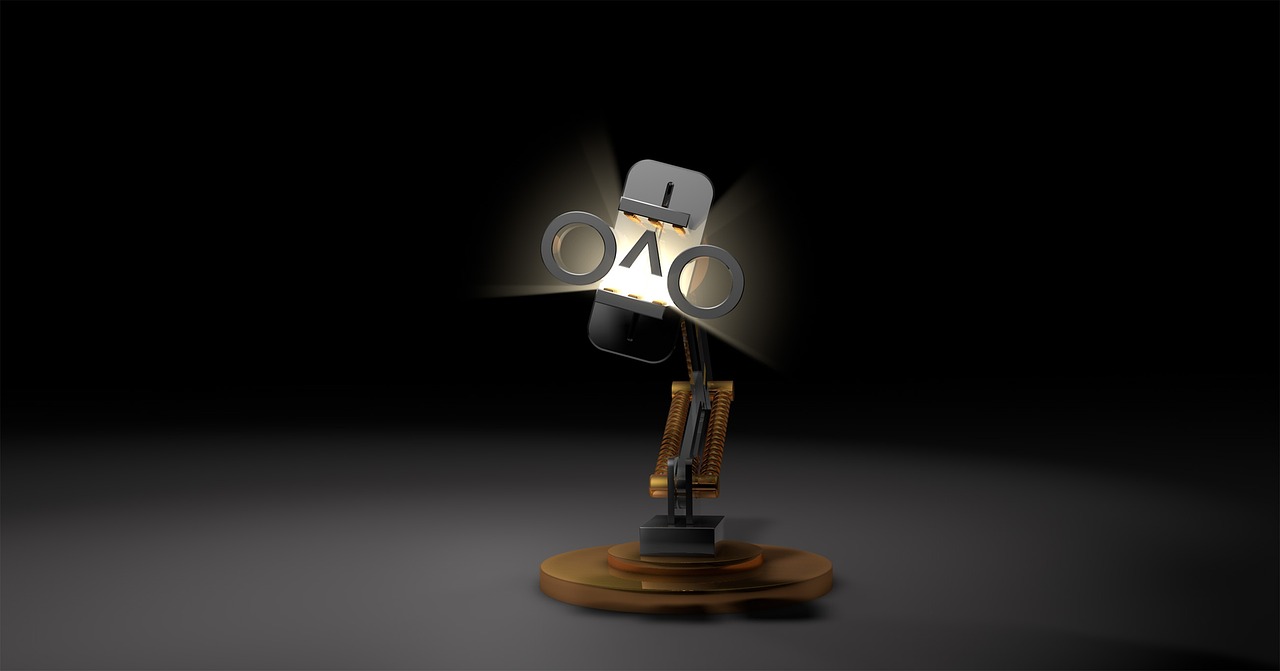
Implications of Proving Reality
Proving the existence of physical reality is not just a matter of philosophical debate or scientific inquiry; it has profound implications that ripple through various aspects of our lives. Understanding what is real shapes our beliefs, influences our actions, and even dictates our moral compass. Imagine living in a world where the very fabric of existence is questioned—wouldn't that lead to chaos? On the flip side, a firm grasp on reality can foster innovation, ethical governance, and societal cohesion.
First and foremost, let's dive into the ethical considerations. When we establish what is real, we create a framework for moral decision-making. For instance, if we accept that our actions have tangible consequences in a physical world, it becomes imperative to act responsibly. Our understanding of reality can influence how we perceive issues like climate change, social justice, and technological advancements. A society grounded in a shared understanding of reality may be more likely to engage in collective action for the greater good.
Moreover, the validation of physical reality significantly impacts science and technology. The more we affirm the existence of an objective universe, the more we can develop theories and technologies that push the boundaries of what we know. For example, consider how advancements in quantum mechanics and relativity have led to breakthroughs in various fields, including computing and telecommunications. These scientific advancements are not merely academic exercises; they have real-world applications that improve our daily lives. Here’s a brief overview of how understanding reality impacts different sectors:
| Sector | Impact of Understanding Reality |
|---|---|
| Healthcare | Improvements in medical technologies and treatments based on a clear understanding of biological realities. |
| Environmental Science | Informed policies and practices that address climate change based on empirical evidence. |
| Technology | Innovations in AI and machine learning that rely on a solid understanding of data and reality. |
As we explore these implications, it becomes evident that the question of reality is not just a theoretical exercise; it has real-world consequences. The more we understand the implications of proving reality, the better equipped we are to navigate the complexities of modern life. We must ask ourselves: How does our perception shape our reality? Are we ready to confront the uncomfortable truths that might arise from such an understanding?
- What is the significance of proving physical reality? Proving physical reality is crucial for ethical decision-making, scientific progress, and societal stability.
- How does perception influence our understanding of reality? Perception shapes our experiences and interpretations, leading to subjective understandings of what is real.
- Can scientific advancements change our perception of reality? Absolutely! Scientific discoveries often challenge and expand our understanding of the physical world.

Ethical Considerations
When we delve into the concept of reality, it becomes clear that our understanding of what is real can significantly influence our ethical frameworks. The nature of reality shapes how we perceive right and wrong, guiding our moral decision-making processes. For instance, if reality is viewed as a subjective experience, then ethical decisions may vary widely among individuals, leading to a more relativistic approach to morality. On the other hand, if we accept a more objective reality, we might find common ground in ethical standards that transcend personal beliefs.
Moreover, the implications of proving physical reality extend beyond philosophical debates into the realm of ethical dilemmas we face in everyday life. Consider the advancements in technology and science that arise from our understanding of reality. Innovations such as artificial intelligence and genetic engineering pose profound ethical questions: Should we manipulate life at its core? What responsibilities do we have toward entities that may possess consciousness, even if they are not biologically human? These questions highlight the necessity of a robust ethical framework grounded in a clear understanding of reality.
Furthermore, the relationship between reality and ethics can be illustrated through various scenarios:
- Environmental Ethics: Our perception of reality influences how we view our relationship with nature. If we see the natural world as a resource to exploit, our ethical considerations will differ from those who view it as a community to which we belong.
- Social Justice: The reality of systemic inequalities prompts ethical responsibilities to advocate for marginalized groups. Recognizing these realities can drive collective action toward equity and justice.
- Technological Ethics: As we develop technologies that can alter reality—like virtual reality or AI—ethical considerations regarding privacy, consent, and the potential for manipulation become paramount.
In essence, the way we define and prove reality has a direct impact on our ethical considerations. It challenges us to think critically about our values and the implications of our actions in a world where the boundaries of reality are constantly being tested. As we navigate this complex landscape, it is crucial to engage in ongoing dialogue about how our understanding of reality shapes our ethical responsibilities, ensuring that we remain vigilant and thoughtful in our decision-making processes.
Q1: How does our understanding of reality affect our ethical decisions?
A1: Our understanding of reality can shape our moral frameworks. If we see reality as subjective, our ethical decisions may vary widely, while an objective view may lead to more universal ethical standards.
Q2: What are some ethical dilemmas arising from advancements in technology?
A2: Ethical dilemmas include questions about genetic manipulation, AI consciousness, and the responsibilities we hold toward these technologies and their impact on society.
Q3: Can environmental ethics be influenced by our perception of reality?
A3: Yes, how we perceive our relationship with nature—whether as a resource or a community—significantly influences our ethical considerations regarding environmental protection and sustainability.

Impact on Science and Technology
Understanding and proving the existence of physical reality is not just a philosophical exercise; it has real-world implications that ripple through the realms of science and technology. When we establish a firm grasp on what constitutes reality, we unlock doors to innovation and exploration that were previously closed. Imagine trying to build a bridge without knowing the laws of physics that govern its structure—it's a recipe for disaster! Similarly, our understanding of reality shapes the theoretical foundations upon which scientific research is built.
One of the most significant impacts of recognizing physical reality is the advancement of scientific theories that explain the universe around us. For instance, the validation of quantum mechanics and relativity has led to groundbreaking technologies that we often take for granted today. These include:
- GPS Technology: Relativity is not just a theory; it’s the backbone of GPS systems. Without accounting for the effects of time dilation, our navigation systems would lead us astray.
- Quantum Computing: The principles of quantum mechanics are paving the way for computers that can process information at unprecedented speeds, revolutionizing industries from finance to healthcare.
- Medical Imaging: Technologies like MRI and PET scans rely on our understanding of physical reality to visualize the inner workings of the human body, allowing for better diagnosis and treatment.
Moreover, the impact extends beyond just theoretical applications. It influences how we conduct experiments, interpret data, and ultimately understand the world. Take, for instance, the scientific method itself, which relies on the assumption that there is an objective reality that can be observed, measured, and tested. This foundation allows scientists to formulate hypotheses, conduct experiments, and draw conclusions based on empirical evidence.
As we continue to probe deeper into the fabric of reality, emerging technologies such as artificial intelligence and machine learning are also reshaping our understanding. These technologies analyze vast amounts of data to uncover patterns that might not be immediately visible to the human eye. By doing so, they challenge our perceptions of reality and suggest that there may be layers of existence that we have yet to unravel.
In essence, the impact of proving physical reality is profound—it not only shapes our scientific inquiries but also drives technological advancements that enhance our daily lives. The more we understand about the nature of our existence, the better equipped we are to innovate and solve the complex challenges facing humanity today.
- What is physical reality? Physical reality refers to the tangible world that exists independently of our perceptions, governed by the laws of physics.
- How does science prove physical reality? Through empirical evidence and the scientific method, researchers can observe, measure, and test hypotheses about the physical world.
- Can perception alter reality? While perception shapes our understanding, it does not change the underlying physical reality; however, it can influence how we interpret experiences.
- What role does technology play in understanding reality? Technology enables us to explore and measure aspects of reality that are beyond our natural capabilities, leading to deeper insights and advancements.
Frequently Asked Questions
- What is the nature of physical reality?
The nature of physical reality is a complex topic that intertwines philosophy and science. At its core, it refers to the existence of a tangible world that we can perceive through our senses. However, interpretations can vary significantly, with some philosophers arguing that reality is constructed by our perceptions, while others assert that it exists independently of us.
- How do idealism and realism differ?
Idealism and realism present two contrasting views on the existence of reality. Idealism posits that reality is fundamentally mental and dependent on our perceptions, suggesting that objects only exist when they are perceived. In contrast, realism argues that an objective reality exists outside of our perceptions, and our senses merely provide us with knowledge about this independent world.
- What role does perception play in understanding reality?
Perception plays a crucial role in how we interpret and understand reality. Our sensory experiences shape our understanding of the physical world, leading to subjective interpretations. This subjectivity can sometimes result in cognitive biases or illusions, which challenge our assumptions about what is real and highlight the complexities of human experience.
- Can quantum mechanics prove the existence of physical reality?
Quantum mechanics offers intriguing insights into the nature of reality, particularly through concepts like superposition and entanglement. While these phenomena challenge traditional notions of reality, they don't necessarily disprove the existence of a physical world. Instead, they suggest that our understanding of reality may be more complex than previously thought.
- What are the implications of proving physical reality?
Proving the existence of physical reality has significant implications across various fields. In philosophy, it can influence ethical frameworks and moral decision-making. In science and technology, a validated understanding of reality drives innovation and exploration, informing advancements that shape our daily lives.
- How does phenomenology contribute to our understanding of reality?
Phemonology focuses on how lived experiences shape our understanding of existence. By examining individual experiences, phenomenology provides insights into the subjective nature of reality, highlighting how personal perceptions can influence our interpretations of the physical world.
- What ethical considerations arise from our understanding of reality?
Understanding reality can profoundly impact ethical considerations. Our perceptions of what is real can influence moral decision-making and societal norms, leading to varying interpretations of right and wrong based on differing views of reality.

